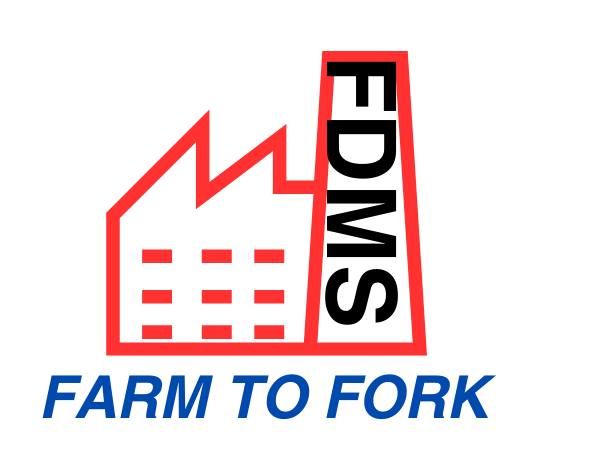The Food Insecurity Experience Scale, or FIES, is a tool developed to measure food insecurity at both individual and household levels. It was introduced by the Food and Agriculture Organization of the United Nations (FAO) and has gained global acceptance due to its straightforward approach and effectiveness.
Food insecurity is a pressing issue affecting millions worldwide. By measuring it accurately, we can understand the extent of the problem and develop strategies to address it. FIES plays a critical role by providing reliable data that helps in formulating policies and interventions. Without such accurate measurements, steps to mitigate food insecurity would be less effective and targeted.
The global implementation of FIES highlights its relevance and practicality. Many countries have adopted this scale to monitor and combat food insecurity. Its acceptance by different governments and organisations signifies its robustness and reliability. By integrating FIES into national surveys, countries can better understand and tackle the intricacies of food insecurity within their populations.
The Components and Structure of FIES
The Food Insecurity Experience Scale (FIES) is designed with a clear, systematic structure to ensure accurate measurement and easy implementation. The scale primarily involves a survey featuring a set of questions aimed at uncovering the aspects and severity of food insecurity faced by individuals or households.
The survey consists of eight questions that delve into respondents’ experiences related to food access, availability, and utilisation. These questions are crafted to be universally applicable, allowing them to be used across different cultures and countries. The indicators cover a range of experiences from worrying about food availability to actual reductions in food intake due to lack of resources.
Each question’s responses are assessed using a scoring system to quantify levels of food insecurity. Respondents can answer with options such as ‘never’, ‘rarely’, ‘sometimes’, and ‘often’, giving a nuanced view of their situation. This scoring helps in categorising food insecurity as mild, moderate, or severe, enabling targeted interventions.
Understanding FIES’s structure is essential for policymakers, researchers, and organisations aiming to address food insecurity. Accurate data collection through this standardised method allows for better resource allocation, policy-making, and monitoring of food security initiatives. Knowing the components and how they work together provides a comprehensive view that aids in tackling the root causes of food insecurity.
Applications and Impact of FIES
The FIES serves as an invaluable resource in shaping effective policies and interventions aimed at tackling food insecurity. By providing a clear and quantifiable measure of food access issues, it enables governments and organisations to develop targeted action plans. These plans are more effective because they are grounded in accurate, reliable data. This is a critical advantage of using FIES.
At the community level, FIES aids in identifying specific areas where food insecurity is most prevalent. Local authorities and NGOs can use this information to tailor their programs and resources efficiently. For example, food banks and community kitchens can better allocate supplies and services based on FIES data, ensuring that they reach those in dire need.
Several case studies highlight the success of FIES-informed interventions. In countries facing severe food shortages, FIES has helped channel international aid more effectively. For instance, initiatives in Sub-Saharan Africa have used FIES data to identify needy populations accurately, leading to more targeted and successful food distribution programs. These real-world applications demonstrate the scale’s potential in making a tangible impact.

Accurate measurement through FIES also plays a role in long-term policy planning. Governments can track changes and trends in food insecurity over time, allowing them to adjust and refine their strategies. This dynamic approach ensures that policies remain relevant and effective, adapting to new challenges and shifting needs. In turn, this fosters a more resilient and food-secure society.
Challenges and Limitations of the FIES
The Food Insecurity Experience Scale (FIES), while highly useful, does have its challenges and limitations. One primary concern is the accuracy and reliability of the data collected. Factors such as respondents’ honesty, comprehension of the questions, and the context in which the survey is conducted can affect the results. Ensuring consistency in survey administration and training enumerators can help mitigate some of these issues.
Cultural sensitivity is another significant challenge. The FIES aims to be universally applicable, but the interpretation of food insecurity can vary greatly across different cultures and regions. What one community considers as a severe food insecurity experience might be viewed differently in another. Adapting the survey to account for these cultural nuances without compromising its standardisation is an ongoing task.
Potential misuse and misinterpretation of FIES data is another consideration. Misreading the scale’s results can lead to misguided policy decisions or inappropriate allocation of resources. It’s crucial for stakeholders, from government officials to NGO workers, to receive proper training in understanding and applying FIES data correctly. Clear guidelines and continuous education can help reduce the risk of misinterpretation.
Despite these challenges, the FIES remains a critical tool in the fight against food insecurity. Addressing its limitations head-on through rigorous training, cultural adaptation, and maintaining high standards of data collection and interpretation can enhance its effectiveness. Acknowledging these limitations doesn’t undermine the value of FIES but rather strengthens our approach to using it more wisely and effectively.
Future Directions and Innovations in Food Insecurity Measurement
The evolution of food security measurement tools like the FIES is ongoing. Technological advancements hold promise for improving the accuracy and efficiency of these tools. Mobile surveys, for instance, can reach wider populations quickly, providing real-time data that can enhance the responsiveness of interventions.
Integrating FIES with other existing metrics could offer a more holistic view of food security. Combining household income data, nutritional assessments, and geographic information can create a multi-dimensional profile that better reflects the complexities of food insecurity. This integrated approach can lead to more precise and effective solutions.
Looking ahead, researchers and policymakers are encouraged to explore innovative methodologies to complement the traditional FIES approach. Machine learning and artificial intelligence applications can analyse large datasets swiftly, identifying patterns and trends that might not be immediately apparent through conventional methods. This can inform more nuanced and adaptive policy decisions.
Engagement with communities is also essential. By involving those who are directly affected by food insecurity in the development and refinement of measurement tools, we can ensure that the tools are relevant and respectful of local contexts. Community feedback can provide insights that enhance the validity and acceptance of the scales used.

For researchers and policymakers, the path forward lies in embracing innovation while maintaining rigorous standards of accuracy and reliability. By advancing how we measure food insecurity, we can develop better strategies to alleviate it, ultimately aiming for a world where food insecurity is a rarity, not a widespread concern.

